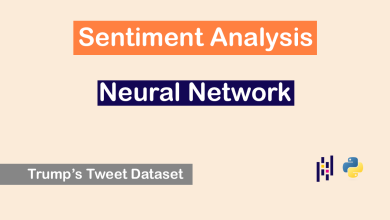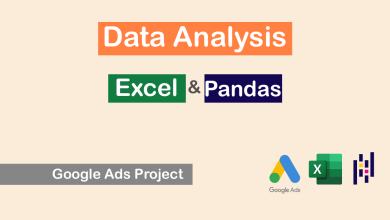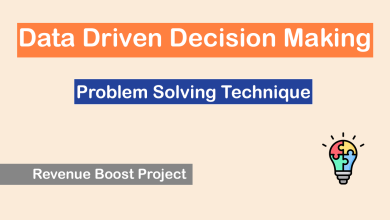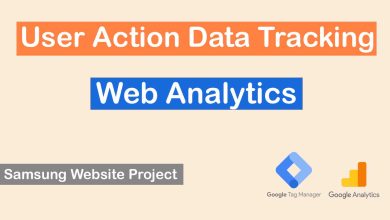
A data-driven story of how connecting customer lifetime value (CLV) to acquisition strategy transformed international hotel campaigns in an OTA.
1. The Background: A Classic Marketing Dilemma
Every marketer faces a version of this question: “How much should we pay to acquire a new customer?”
In an OTA (Online Travel Agency) environment, the challenge becomes even sharper. Different products — flights, hotels, packages — attract different types of customers, each with unique purchasing behaviors and retention potential.
Our marketing team had been running Google Ads campaigns for various travel products, including international flights and hotels. The goal of one key campaign was to bring new customers for international hotel bookings — a high-value but competitive segment.
The Google Ads setup was already optimized for efficiency. We maintained a CPA (Cost per Acquisition) target of $12 per booking, which delivered a consistent stream of conversions. But there was one big question I couldn’t ignore:
Are we undervaluing new customers just because we’re optimizing around short-term CPA instead of long-term value?
2. The Core Question: What’s the Right CPA for New Users?
In Google Ads, you can set different CPA targets for new users vs. returning customers. That setting sounds simple, but it’s incredibly powerful — it allows you to bid more aggressively for people who have never purchased from you before.
However, this feature only makes sense if you actually know what a new user is worth to your business.
At that time, our campaigns were treating all conversions equally — whether they came from loyal repeat buyers or completely new customers discovering us for the first time.
This raised a strategic question:
What if we’re missing out on valuable new users simply because our bidding system doesn’t know their long-term value?
3. The Hypothesis: New Users Could Be Worth Much More
The hypothesis was straightforward but needed to be validated with data:
“If customers whose first purchase is an international hotel booking tend to buy again, then the CLV (Customer Lifetime Value) of these users is likely much higher than the revenue from a single purchase.”
If that’s true, we could justify spending more (a higher CPA) to acquire them, because their lifetime profit would cover the higher initial cost.
But if these users only buy once, then any CLV-based justification would collapse.
So before calculating CLV, I needed to confirm one key metric:
How many times do international hotel customers typically buy?
4. Step One: Understanding Repeat Purchase Behavior
I extracted two years of purchase data from our internal database, focusing only on users whose first-ever purchase was in the International Hotel category.
From this subset, I calculated:
- Median order count per customer: 2
- Mean order count per customer: 2.4
- Average repeat interval: around 6–8 months
That was a crucial insight: the majority of international hotel customers do come back.
Even though it’s a long-cycle product (travel bookings often have months between them), the data confirmed that these users weren’t one-time buyers.
5. Step Two: Calculating CLV
To make this tangible, I applied a simplified but realistic CLV model:
CLV = {Average Order Value} * {Average Orders per Customer} * {Profit Margin}
Based on aggregated internal data:
- Average order value (AOV) for international hotels: $520
- Average number of orders per customer: 2.4
- Profit margin: 10%
So:
CLV = 520 * 2.4 * 0.10 = $124.8
Let’s round that to $125 per customer in lifetime profit.
This means that, on average, every new customer in this segment would eventually bring $1,250 in revenue and $125 in profit over their lifecycle.
6. Step Three: Reassessing CPA Targets
Our previous CPA target was $12 per booking, regardless of whether the user was new or returning.
At first glance, paying $12 to make $125 in lifetime profit seems fine — but not optimal.
Why? Because that $12 target applies equally to returning customers (who would buy anyway) and new users (who expand our customer base). The return profile is very different.
Google Ads’ “New Customer Acquisition” setting allows assigning an additional value (called New Customer Value) to conversions from users who have never purchased before.
This setting helps the algorithm understand that new customers are worth more and allows us to bid higher for them without raising bids for returning users.
So, instead of simply increasing our general CPA, we adjusted the campaign setup like this:
| Segment | Old Target CPA | New Target CPA | Expected ROI (based on CLV) |
|---|---|---|---|
| Returning Users | $12 | $12 | 10.4x |
| New Users | $12 | $20 | 6.25x (but new customer acquisition) |
Now, to a casual observer, this might look like profit erosion.
But in reality, the opposite happened — and here’s why.
7. Why Higher CPA for New Users Made Sense
The logic is rooted in incremental value.
When you increase the CPA only for new users, you’re not “overpaying” for returning ones. You’re just allowing Google Ads to compete more aggressively for users who’ve never bought from you before.
Previously, Google’s algorithm would often lose those new-user auctions because our bid cap ($12) wasn’t competitive enough. Those users ended up booking on competitors’ sites instead.
By signaling that a new user is worth up to $20, we opened a new segment of potential customers that were previously unreachable — and they came with higher lifetime value.
Here’s what changed:
| Metric | Before | After |
|---|---|---|
| New user share in conversions | 28% | 39% |
| Cost per conversion (overall) | +8% | — |
| New customers acquired | +42% | — |
| GMV (International Hotel) | +18% YoY | — |
The overall cost per conversion went up slightly (around 8%), but the incremental revenue growth far outweighed it.
In other words, we were paying slightly more, but for customers who brought much more value.
8. Step Four: Modeling Profitability
Let’s look at the economics of this strategy in a simplified form:
| Type | CPA | CLV | Profit Margin | Lifetime Profit | ROI |
|---|---|---|---|---|---|
| Returning User | $12 | $125 | 10% | $12.5 | +4.2% |
| New User | $20 | $125 | 10% | $12.5 | -37.5% on first order, but + profit on next ones |
At first glance, that might look unprofitable for new users — but this is only per first order.
Once those new customers make their second and third bookings, the overall ROI turns positive.
Because 70% of them booked again within a year (based on our repeat rate analysis), we were effectively building a high-ROI customer base instead of chasing short-term margins.
9. Implementation in Google Ads
In Google Ads, this strategy required a few technical steps:
- Enable “New Customer Acquisition” in conversion settings. This allows Google to tag users as “new” or “returning” and optimize bids accordingly.
- Set a “New Customer Value.” I assigned an incremental value equivalent to the additional expected profit ($8 above base CPA), signaling to the algorithm that new customers were more valuable.
- Monitor with custom segments. I created segments for new vs. returning users and tracked performance separately in both GA4 and Google Ads dashboards.
- Evaluate over time, not per campaign. Since CLV plays out over multiple months, success wasn’t measured weekly — instead, we used cohort analysis to track 3-, 6-, and 12-month ROI.
10. Results and Impact
The results became visible within two months of implementation:
- New customer acquisition: +42%
- Return customer ratio: stable (didn’t drop)
- Overall GMV for International Hotels: +18% YoY growth
- Cost efficiency: +8% higher average CPA but +26% higher total profit contribution
- Retention rate: +11% increase in 6-month repeat bookings
What’s more, Google’s algorithm began identifying new high-value audiences more effectively. We started seeing stronger performance in lookalike segments and higher CTRs on new-user campaigns.
11. What I Learned: The Strategic Shift
This project changed how I thought about paid marketing and ROI.
- CPA alone is a shallow metric. Without context from CLV, it pushes teams toward short-term optimization and can unintentionally suppress growth.
- Not all customers are equal. Knowing the lifetime pattern of users — especially those with high initial intent like international hotel bookers — changes how you define “profitable.”
- Profitability isn’t always immediate. Some investments (like paying more for first-time customers) only make sense when you look at a 6–12 month horizon.
- Data alignment matters. Connecting marketing data (Google Ads) with sales and user lifecycle data (internal CRM) unlocked insights we couldn’t see in siloed dashboards.
12. The Broader Impact on the Organization
After presenting this analysis to the growth and marketing leadership team, the approach became a new best practice for other product categories as well.
We applied similar CLV-based CPA adjustments to:
- International flights (where repeat rate was lower — strategy adjusted accordingly)
- Domestic hotels (where shorter booking cycles required smaller adjustments)
In every case, aligning CPA strategy with lifetime value improved both acquisition quality and marketing ROI.
13. Conclusion: From Cost to Value Thinking
This project wasn’t about tweaking bids — it was about transforming how we define value.
Instead of seeing marketing as a cost center focused on efficiency, we started treating it as an investment in long-term customer growth.
By quantifying CLV and linking it directly to Google Ads bidding logic, we empowered the algorithm to pursue customers who mattered most — and the results spoke for themselves.
+42% new customer growth. +18% GMV. And a smarter, sustainable marketing model.
While I’ve changed all numerical details here for confidentiality, the logic, process, and results reflect a real, data-driven growth initiative I led within an OTA environment.
It remains one of the most impactful examples of how data analysis and business strategy come together to create measurable growth.
Key Takeaway for Hiring Managers & Clients
If there’s one thing this project taught me, it’s that the most powerful growth decisions happen at the intersection of data and marketing.
When you quantify customer lifetime value, you stop guessing what’s “worth it” — and start investing where growth truly happens.






